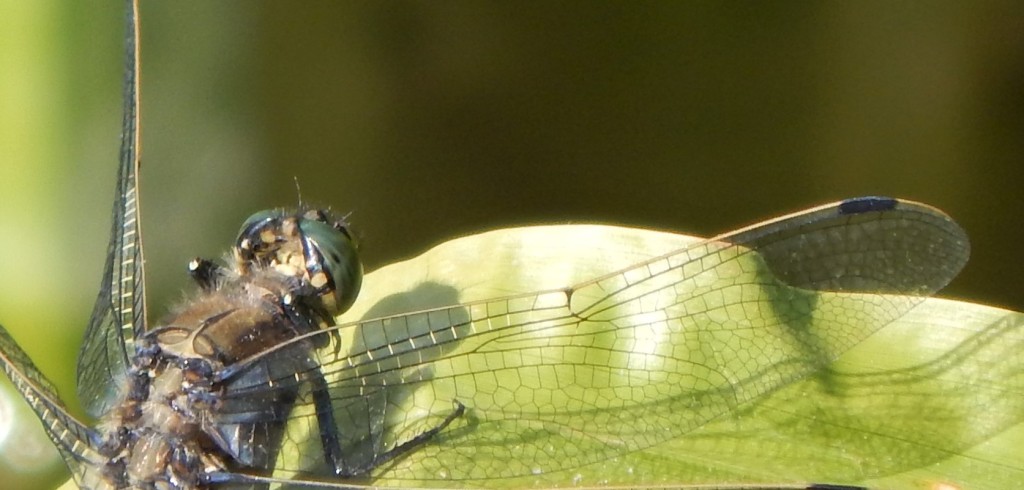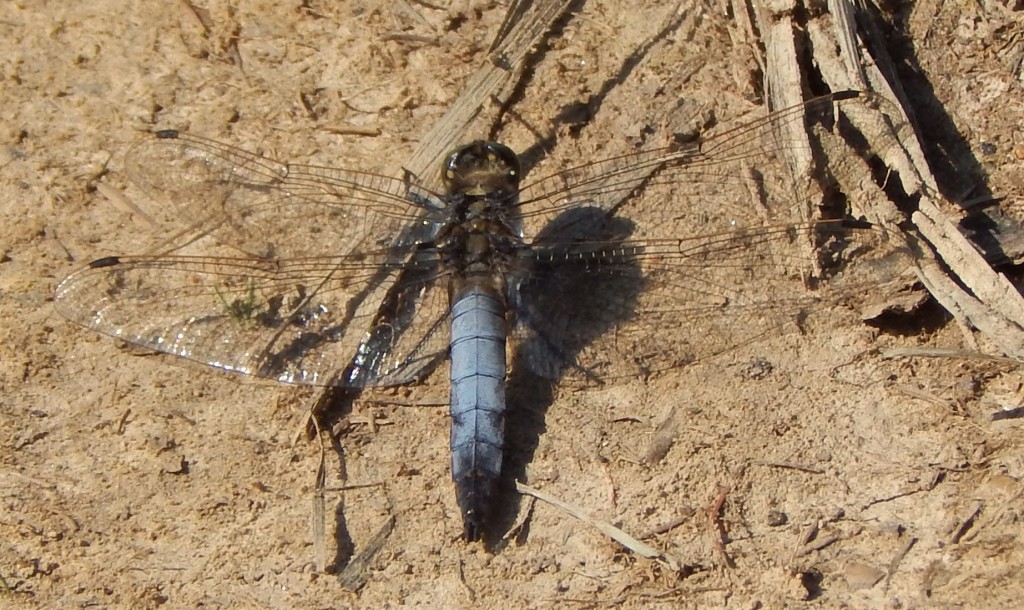
[242] Orthetrum cancellatum, Black-tailed Skimmer
Introduction
Orthetrum cancellatum, the Black-tailed Skimmer, is one of about twenty species of dragonflies variously called Skimmers, Chasers and Darters. It Is not the only species of Orthetrum with a black tail and only the male has a black tail.
Taxonomy
Kingdom – Animals
Phylum – Arthropods
Class – Insects
Order – Odonata (Dragonflies and Damselflies)
Infraorder – Anisoptera (Dragonflies)
Family – Libellulidae (Darters, Skimmers and Chasers)
Genus – Orthetrum
Scientific Name – Orthetrum cancellatum
Name
The males may fly low over the water in search of females – hence the name skimmer.
Orthetrum, from Greek and Latin roots means straight-tool, referring to the clasper used by the male in mating. Cancellatum is Latin for cross-barred or latticed, referring to the markings on the female.
Description
Libellulidae is the largest family of dragonflies with about a thousand species. It is understandably difficult to give then all meaningful names. Some are called skimmers, chasers or darters from their behaviour but most species have no common names. For those named by their appearance we have to understand that males and females are generally very different in colouration.
There are four species within this family found in the UK for which the male has a blue body and two of these have a black tail. The male Orthetrum cancellatum is very similar to [206] the Scarce Chaser, although you may be able to detect differences at the base of the wings.


The female is yellow with dark longitudinal bands.
Males are aggressively territorial. They will eat butterflies, grasshoppers and even damselflies.
As for all Odonata they form a mating wheel. The male clasps the female by the back of her head and she curls her abdomen to meet his sex organs.

Habitat
Orthetrum cancellatum is common and widespread over most of Europe and parts of Asia. It was not seen in Britain in 1934 but is now common over all of Wales and England except the far North.
The larvae live in lakes and slow water, often buried in debris at the bottom, for two to three years going through about a dozen instars.
Other Notes
You may spot a male dragonfly resting but females are less bold and more difficult to spot.
See also
Orthetrum coerulescens, the Keeled Skimmer is very similar in appearance but lacks the black tail.
We have seen the Scarce Chaser and [207] the Four-spotted Chaser. [329] the Common Darter will be the last one from this family.
